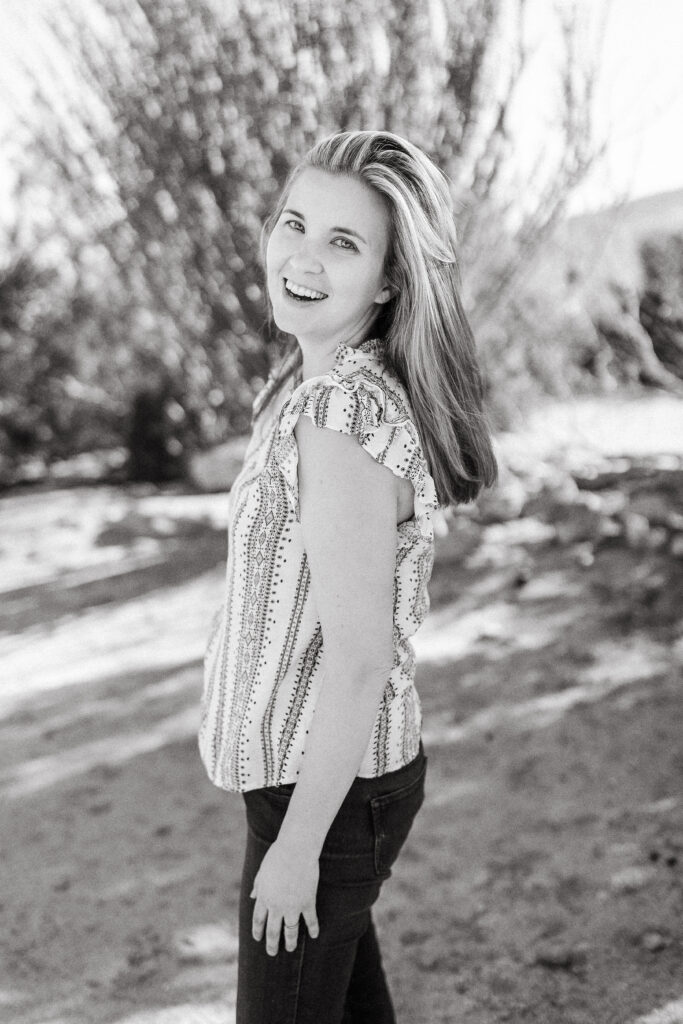
Have you been considering using AI in your blog writing?
As a photographer, you’re no stranger to the power of technology in your craft. From digital cameras to photo editing software, you’ve likely embraced many technological advancements in order to improve your work. In fact, you’ve likely embraced many AI technologies without really thinking about them.
Take LightRoom, for example. The masking tool that allows you to select your subject (or even just one person) is a form of AI.
But have you considered the ways in which artificial intelligence (AI) could enhance your business beyond the realm of simply the taking and editing of photos?
I have been playing around with using AI for blog writing and have found how it can transform my processes. In this article we will explore the use of AI for blog writing, and how it can benefit you as a photographer. We will also touch on a couple of mistakes to avoid when using AI.
Ready? Let’s go!
What is AI for blog writing?
AI for blog writing is the use of artificial intelligence technology to generate blog posts. This technology uses natural language processing algorithms to analyze and understand human language, and then uses that understanding to generate text that sounds like it was written by a human.
That sounds like a bunch of mumbo-jumbo to me. So think of it like a supercomputer that is able to learn and grow to help create answers that sound like they would come from a friend (a well, educated friend). Think of AI as a way to phone a friend who knows A LOT!
How can AI benefit photographers in their blog writing?
Oh, let me count the ways. Just kidding. There are several ways it can benefit you. Let’s start with one of the biggest and most important for any small business owner.
First, AI can help you in time-saving.
As a photographer, you’re likely busy with photo sessions, editing, and serving clients. While I’m a huge fan of blogging to help streamline your process, writing a blog post can be time-consuming, especially if you’re not a natural writer. By using AI for blog writing, you can generate a post quickly and easily, freeing up more time for you to focus on other things in your business and your life.
Another reason is consistency or frequency you’re able to maintain due to the first way AI can benefit you in blog writing.
When you’re running a photography business, consistency is key. Posting regularly on your blog can help attract new clients and keep your existing ones engaged. Posting blogs regularly can help tell Google that your website is important, with regular and fresh content.
Plus, as I cover in my course Master Blogging, writing good quality blogs can be the foundation of your other content. Meaning you can remain consistent for both your website and your social media.
By using AI for blog writing, you can ensure a consistent output of quality content, even if you feel you don’t have the time.

Next, is AI is good for SEO optimization:
AI for blog writing can help you optimize your blog posts for search engines. These algorithms are designed to analyze keyword density, sentence structure, and other factors that impact how search engines view your content. By using AI for blog writing, you can ensure that your posts are optimized for the best possible search engine results.
Finally, using AI for blog writing allows for flexibility.
Using AI allows you to experiment with different types of content. For example, you can use AI to generate listicles, how-to guides, and other types of posts that might be outside of your comfort zone as a writer. This flexibility can help you attract new readers and expand your reach for your business.
What are some ways to use AI in blog writing?
You can vary the level, or amount, of assistance you have from AI.
For a higher level, you can have AI write your blog post. Make sure you read the below considerations before fully committing to this direction. However, by using AI to write a blog post, you can save a lot of time, when used well.
If you prefer to write yourself, AI is great for coming up with ideas for blog posts. You can begin with a topic or goal for a post and have AI offer possible blog topics or titles.
Even more, you can use AI to come up with keyword suggestions. As you have a topic or a title idea, but might be struggling with the write wording or keyword to want to rank for. AI can help you come up with keywords.
What are some considerations for using AI in your photography business?
While AI for blog writing can be a powerful tool for photographers, there are some considerations to keep in mind:
- Quality control: Not all AI-generated content will be perfect, and you’ll need to review and edit your posts before publishing. This can add some time to the process, but it’s important to ensure that your posts are accurate and well-written. In one post I was using AI in blog writing, it actually said: “….to have SEO friendly newborn photos.” Ha! My clients do not care about SEO-friendly photos. Had I published the blog with that in there, I would have lost credibility and come off rather strange and phony.
- Brand voice: AI-generated content may not always match your brand voice. Families hire you because of YOU, and your content should represent that. You need to spend some time customizing the output of the AI to ensure it matches your brand and personality.
- Cost: AI for blog writing can be expensive, especially if you’re using a high-quality service. Be sure to factor in the cost of AI-generated content when you’re considering whether or not to use it. Currently, programs such as ChatGPT are free (it’s the one I used for this blog post, actually). However, I’m sure as AI grows in skill and popularity, the pricing will increase.
- You still need to know how to write a blog well: You cannot edit an AI blog or format your blog for SEO and/or your client without knowing what it should look like. Taking a course (remember, I have one, wink, wink) that teaches you the fundamentals of blogging will be key in making AI work most effectively for your blog writing.
- Finally, input equals output: In other words, you get what you put in. The better you are at phrasing questions, including more information, etc, the better results you get. So get specific as possible. Don’t be afraid to take AI-generated content and then elaborate or put it back in asking for more.
In conclusion, AI for blog writing can be a valuable tool for photographers looking to expand their business beyond the realm of photography.
By using AI-generated content, you can save time, ensure consistency, optimize for SEO, and experiment with different types of content. However, it’s important to keep in mind the considerations I mentioned above and to approach AI-generated content with a critical eye.
In the end, your goal with blog writing is to attract clients and serve those clients so they have a great session. Meaning that you need to ensure that your brand voice comes through.
Yet, with the right approach, AI for blog writing can be a powerful addition to your photography business.

Thank you Neyssa for this amazing insight on AI and how to embrace it to improve our photography business.
okay–I need to re-visit this blog post before I write MY next blog post! Thanks for the tips!